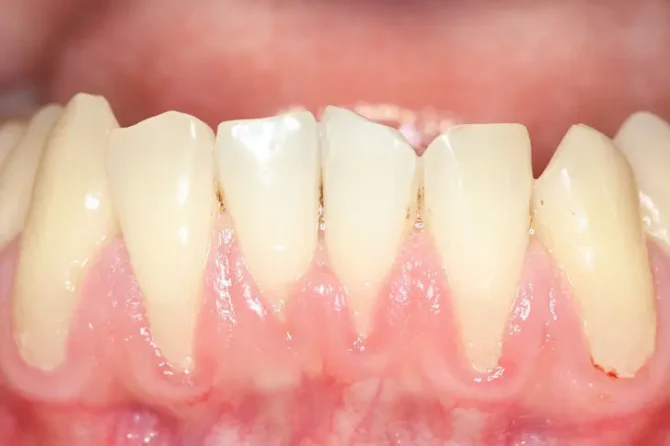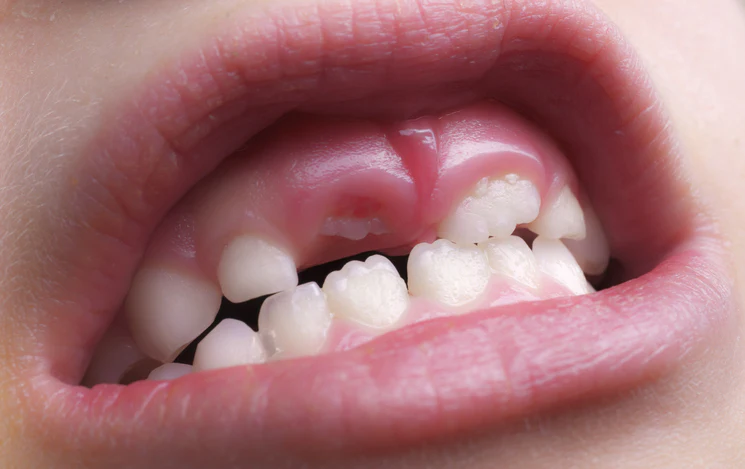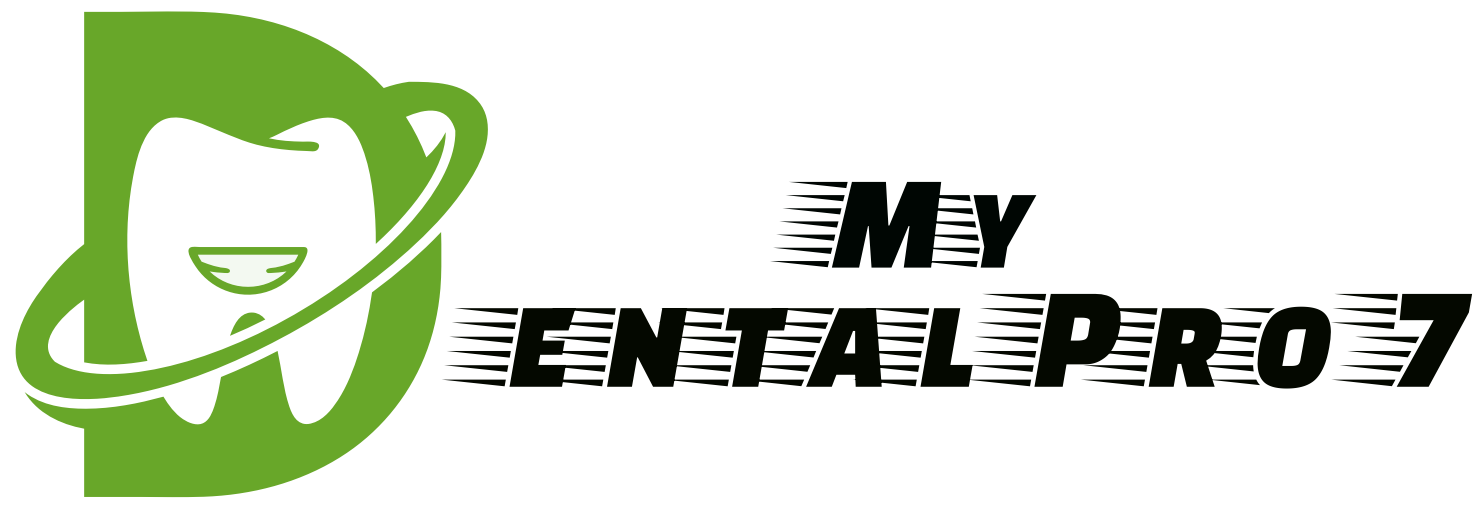
Tired of Receding Gums? Try These Special Techniques to Grow Gums
Gum Recession: What is it and What Causes it?
Gum recession (or gingival recession) is a progressive dental condition where the edges of the gums begin to pull away from the teeth. This exposes the roots of the teeth and can lead to tooth sensitivity, root decay, and eventual tooth loss if left untreated.
Usually, gum recession is caused by a combination of factors like poor oral hygiene, excessive brushing or flossing, periodontal disease, grinding or clenching teeth, misaligned teeth, and aging. In some cases, gums may also recede due to genetics, hormone changes, or other medical conditions.
Gum recession can also be caused by an improper fit of a dental device such as dentures or bridges. Using incorrect brushing techniques can cause gum recession as well, as too much pressure on the gums can push them away from the teeth.

Overview of Gums Growing Back
Gum recession is a condition where the gum tissue surrounding the teeth shrinks or recedes. It can be caused by certain oral habits such as vigorous brushing, aggressive flossing, or even biting your nails. The receding can also be attributed to periodontal disease, hormonal changes, or genetics.
The good news is that gums can potentially grow back if treated early enough. Unfortunately, once the gum has been damaged, it cannot regenerate itself and needs assistance from dentists or other treatments. For example, there are surgeries, such asgum grafts, which help tissue regrow, but these are normally onlyused as a last resort.
It is possible, however, to stimulate the growth of healthy gums through lifestyle changes, proper oral hygiene, and a healthy diet. This guide will cover techniques and practices that may help encourage the growth of receded gums.
Diet and Nutrition for Healthy Gums
Good oral hygiene is important for keeping healthy gums, but diet plays a huge role as well. Eating a balanced diet full of fruits, vegetables, and proteins can help keep your gums healthy and strong. Additionally, vitamins and minerals from foods can contribute to a strong gum line and prevent gum recession.
Including plenty of Vitamin C in your diet is essential. Vitamin C helps to form collagen, an important substance that provides structure for the entire body. It is especially important for gum tissue, which needs adequate amounts to remain firm and healthy. You can get Vitamin C from food sources such as oranges, kiwi fruit, strawberries, grapefruits, tomatoes, broccoli, and Brussels sprouts.
Vitamin A is also important for maintaining healthy gums. This vitamin can be found in orange, yellow, and red fruit and vegetables such as sweet potatoes, carrots, pumpkin, cantaloupe, and mangoes. Vitamin A helps to prevent infection and keeps your gums healthy.
Other important nutrients for healthy gums are zinc, calcium, iron, and folic acid. These minerals play important roles in the overall health of your body, and they are especially important for your gums. Foods rich in these minerals include salmon, turkey, spinach, kale, eggs, whole grain breads and cereals, and yogurt.
Eating a healthy, balanced diet helps keep your gums healthy and strong, and can potentially reduce the risk of gum recession. If you want to make sure your gums remain healthy, consult with your dentist to make sure you are getting enough of the right nutrients.
Maintaining the health of our gums is essential for protecting our teeth from cavities and gum disease. Healthy gums help to keep our teeth in place and prevent them from becoming loose. But what happens when our gums start to recede? Thankfully, in some cases, it’s possible for our gums to regrow after they have receded. Eating a healthy, balanced diet is one of the most important ways to promote healthy gums. Eating foods that are rich in vitamins, minerals and other nutrients can help strengthen and stimulate the regrowth of gums. Foods such as foods rich in Vitamin C, including citrus fruits, dark green vegetables and red peppers, are especially beneficial in promoting healthy gums. Omega-3 fatty acids, found in fish and some vegetable oils, may also help with gum regrowth, as well as calcium-rich foods such as dairy products, leafy greens and nuts. In addition to eating a healthy diet, good oral hygiene practices are essential for preventing premature gum recession and stimulating the growth of new tissue. Brushing at least twice a day and flossing once a day will help remove plaque, bacteria and other debris from your teeth and gums. Some electric toothbrushes and mouth rinses can help stimulate the regrowth of gums. Gum recession can also be prevented by avoiding habits that can cause damage to your gums, such as hard brushing or using tobacco products. If you wear dentures, make sure that they fit comfortably to avoid irritation to your gums. Additionally, visit your dentist regularly to monitor and address any changes in gum health. By following these tips, you can help ensure that your gums remain healthy and prevent premature gum recession. Eating a healthy diet, practicing good oral hygiene and avoiding damaging habits can all help keep your gums healthy and potentially promote the regrowth of receding gums.
Oral Hygiene: The Basics
Taking care of your gums is essential in preventing gum recession and promoting healthy growth. Keeping up with oral hygiene is a crucial part of this. In general, it’s important to brush your teeth twice a day and floss at least once a day.
When brushing and flossing, it’s vital to pay attention to the intensity and duration of both practices. To properly clean your mouth, you should brush for two minutes, paying extra attention to the back of your teeth and the gum line. As for flossing, you should scrape the sides of your teeth very gently and not apply too much pressure when pulling the floss through.
Additionally, it’s important to use toothpaste that is made for your teeth specifically. It should contain fluoride, as that helps to strengthen enamel and protect your teeth from plaque and other bacteria. If you’re unsure about the type of toothpaste to use, it’s best to consult your dentist.
Overall, when it comes to keeping your gums healthy, proper oral hygiene habits are essential.
Special Gums-Growing Techniques
Gum recession can be a worrying and unsightly problem, but luckily there are various techniques we can employ to address it. Here we will look at a few of the more specialized treatments that may help regenerate receding gums.
One method is to use a mouthwash specifically formulated for gum health. These products typically contain certain antibacterial agents which can help to fight off bacteria which can contribute to gum recession. In addition many of these products can also help to stimulate regrowth.
Another option is to use an electric toothbrush, as the extra bristles can help to massage your gums, promoting circulation and potentially leading to increased regrowth. Of course, it is important to ensure you use the brush correctly, and always follow the instructions provided by the manufacturer.
Finally, there are surgical intervention options such as gum grafts which can effectively replace damaged or receded gums with healthy tissue. This is usually considered a last resort option, however in some cases where other treatments have not been successful, this may be necessary. It is important to discuss all treatment options with a qualified dental practitioner before making any decisions.
In summary, whilst gum recession can be stressful and left untreated can lead to further complications, there are various treatments available for those who want to look into helping their gums regrow. From mouthwashes to electric toothbrushes, through to surgical intervention, these options should be discussed thoroughly with your dentist.
Premature Gum Recession Prevention
Gum recession can be an uncomfortable and embarrassing problem, but there are measures you can take to help reduce the likelihood of it occurring. The most important factor to remember is that oral hygiene is key when it comes to preventing gum recession. Brushing and flossing your teeth at least twice a day, with a soft brush and non-abrasive toothpaste can help reduce bacteria in the mouth that can cause gum inflammation and lead to receding gums.
In addition to practicing good oral hygiene, you can also look into special rinses and electric toothbrushes which may help stimulate gum regrowth. These can be effective when used as part of a comprehensive dental hygiene routine. Other preventive measures include visiting your dentist regularly for cleanings and check-ups and using dental floss or interdental brushes to help target areas between the teeth.
It is also important to be aware of any medical conditions you may have that could increase the risk of gum receding. Diabetes, for example, is a condition that can make the gums more prone to receding. If you do have diabetes, it’s important to take steps to manage it carefully in order to reduce the risk of gum recession.
Finally, it is also wise to avoid habits that can increase the risk of gum recession. These include smoking, excessive alcohol consumption, and other forms of substance abuse. Eliminating these habits from your life can greatly reduce the risk of gum recession and help ensure healthy gums.
Conclusion
Gum recession is a common dental issue that can cause serious issues in the long run. In some cases, gums may be able to regrow if proper nutrition, oral hygiene and diet are observed in conjunction with special gum-growth techniques. Prevention of premature gum recession is possible through lifestyle habits and choices, and this should be discussed with a dental professional for advice. Remember to take care of your gums and reach out to a dentist if you have any concerns or questions.
Overall, this guide has provided an overview of gum recession, potential regrowth, and steps you can take to help stop further recession and promote growth. Now, it’s time to take action. Do your research and speak with your dentist to identify the best plan for you. While gums may not grow back in all situations, there are still ways to improve the health of your gums.
The causes, prevention and treatment of gum recession can often be confusing. To make sure we are getting the most accurate and up-to-date information, we need to turn to reliable sources. While there are still many questions about this phenomenon, some excellent resources have been created that explore the issue in depth. To get a better understanding of gum recession, it is important to have access to the most up-to-date research and studies. Below is a list of reliable external links to research papers, articles, websites and other sources of information related to gum recession and regrowth:
- American Dental Association – Gum Recession
- American Academy of Periodontology – Gum Disease
- Regeneration of periodontal tissues using growth factor therapeutics: A review
- Gum Recession: Causes, Treatment and Prevention
- Preventing and Treating Gum Recession
- Gum recession: risk factors and treatments
- How Can We Prevent and Reverse Gum Recession?
Frequently Asked Questions About Gum Recession and Regrowth
Gum recession can be a scary prospect. Many people are unsure if their gums can grow back and if there are any potential remedies they can utilize. Below are some common questions people have about gum recession and regrowth.
- Can my gums grow back?
Yes, in many cases your gums can grow back. The health of your gums and the amount of damage done by recession will determine how successful any treatment will be. - What is the best way to treat gum recession?
The best way to treat gum recession is to visit a dentist or dental hygienist. They will be able to assess your individual situation and offer advice on the best approach. - Are there any at-home treatments I can try?
Yes, there are many at-home treatments you can attempt to help with gum recession. For example, you can use an electric toothbrush, mouth rinse, or even dietary changes. However, it is important to note that these should not be used as a primary means of treating gum recession. - How can I prevent gum recession?
To prevent gum recession you should practice good oral hygiene habits. This includes brushing and flossing daily, as well as visiting a dentist on a regular basis for check-ups. Additionally, avoiding smoking and consuming sugary foods can also help to reduce your risk of gum recession.
Acknowledgments
We would like to express our sincere gratitude to all the experts who have worked hard to provide us with valuable insight into gum recession and the potential for gums to grow back. We thank those who shared their experiences in treating gum recession, allowing us to gain greater understanding of this complex issue. Without your contributions, this guide would not have been possible. Thank you.
2016 Update: Advances in Dental Health
In the years since the publication of this guide, there have been a number of advances in the field of dental health related to gum recession and its potential for regrowth. For starters, the use of laser treatments has become more prevalent. Lasers are now used to treat periodontal (gum) infections and to reshape receded gums. Additionally, newer products such as collagen-infused gingival grafts are being deployed to provide regenerative benefits to gum tissue.
Additionally, more studies are being conducted with regards to the role of nutrition and diet in promoting healthy gums. Scientists have found evidence that certain vitamins (such as vitamin C) and minerals (such as zinc) can help stimulate the body’s natural healing process to improve the health of your gums.
However, perhaps the most significant advancement in the field of dental health has been the proliferation of at-home whitening kits. Since gum recession is often a sign of aging and wear-and-tear, it can be accompanied by discoloration of the teeth. Now, people have access to bleaching agents that can both reduce the visibility of existing gum recession while also restoring a brighter smile.
FAQs About Gum Recession and Growth
- Q: What is gum recession?
A:Gum recession is when the edge of the gums, or the gingival tissue, pulls back from the teeth exposing more of the tooth than usual. This can happen due to improper dental hygiene or other factors such as periodontal disease, age, hormonal changes, genetics, bruxism, use of tobacco, or aggressive tooth brushing. - Q: Are gums able to grow back after they’ve receded?
A: In some cases, gums may be able to grow back over time through improved oral hygiene habits and diet. However, depending on the severity of gum recession, periodontal surgery may be required to fix the problem. - Q: What role does diet play in healthy gums?
A: Eating a nutritious diet with foods rich in vitamins and minerals helps support the body’s natural ability to repair itself, including gum tissue. Foods such as carrots, spinach, and apples can provide the necessary nutrient building blocks for gum growth and health. - Q: Are there certain foods that can help gums regrow?
A: Yes. Foods rich in vitamin C, such as oranges, grapefruits and lemons can help stimulate the production of collagen inside the gums. Furthermore, vitamin A, zinc and omega-3 fatty acids found in fish, flaxseed and eggs can help promote healthy gums. Lastly, probiotics found in yogurt, kimchi and fermented vegetables increase the level of healthy bacteria in the mouth, fighting off harmful bacteria that often lead to gum recession. - Q: What is the best way to clean one’s teeth and gums?
A:It’s important to practice regular oral hygiene habits including brushing your teeth twice a day for two minutes with a fluoridated toothpaste, flossing every day, and rinsing with an antibacterial mouthwash at least once a day. Additionally, electric toothbrushes can be useful for those with gum recession because the oscillating bristles stimulate the gums, helping to improve circulation in the area and potentially promoting growth. - Q: What activities should I avoid in order to prevent premature gum recession?
A: It is important to avoid any activities or behaviors that may harm the gums such as dragging the brush too hard on the gums while brushing and flossing, using a hard toothbrush, smoking and using drugs, grinding your teeth and using toothpicks. - Q: Are there other methods I can use to help promote gum regrowth?
A: Using mouth rinses such as chlorhexidine and saltwater can help fight bacteria and reduce inflammation, promoting healing and regrowth. Additionally, some research suggests that acupuncture may be useful in reducing inflammation associated with gum recession, although more clinical studies are needed in this area.
